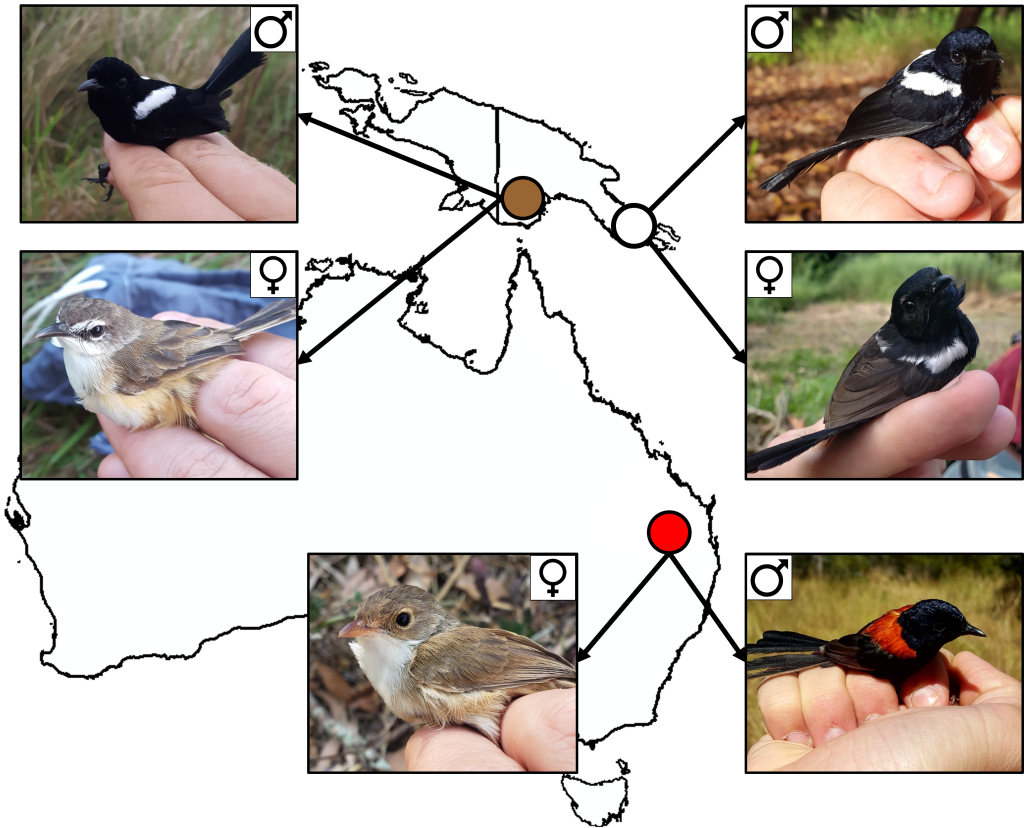
I am a 1st generation behavioural ecologist and evolutionary biologist that is interested in the intersection of signal evolution, the behaviors that result of these signals, and the physiological underpinnings of these phenotypes in female animals. Birdsong and pretty colors are my jam.
I completed my dissertation in the Karubian lab of the Department of Ecology and Evolutionary Biology of Tulane University, New Orleans in Spring 2022. There, I studied white-shouldered fairywrens (Malurus alboscapulatus) of Papua New Guinea and their sister species, red-backed fairywrens (M. melanocephalus) of Australia. In white-shouldered fairywrens, I explored (1) if the evolution of multiple signaling phenotypes commonly associated with social selection pressures are correlated with an increase in such pressure in allopatric populations, (2) if female ornamentation functions as a signal in female-female competitive contexts, and (3) how females and males behaviorally differ in territorial contexts when responding as a duo versus flying solo. Finally, (4) in red-backed fairywrens, I am interested in how (mated) male red-backed ornamentation relates to the degree females are aggressive towards same-sex rivals (i.e., how does female motivation to secure higher quality resources influence aggression).



Prior to attending Tulane, I received my Bachelors and Masters at Appalachian State University in Boone, North Carolina with Dr. Lynn Siefferman. I studied interspecific aggression between golden-winged and chestnut-sided warblers. I found that that interspecific aggression is a product of misidentification rather than competition, as is commonly inferred when two species behave agonistically.
